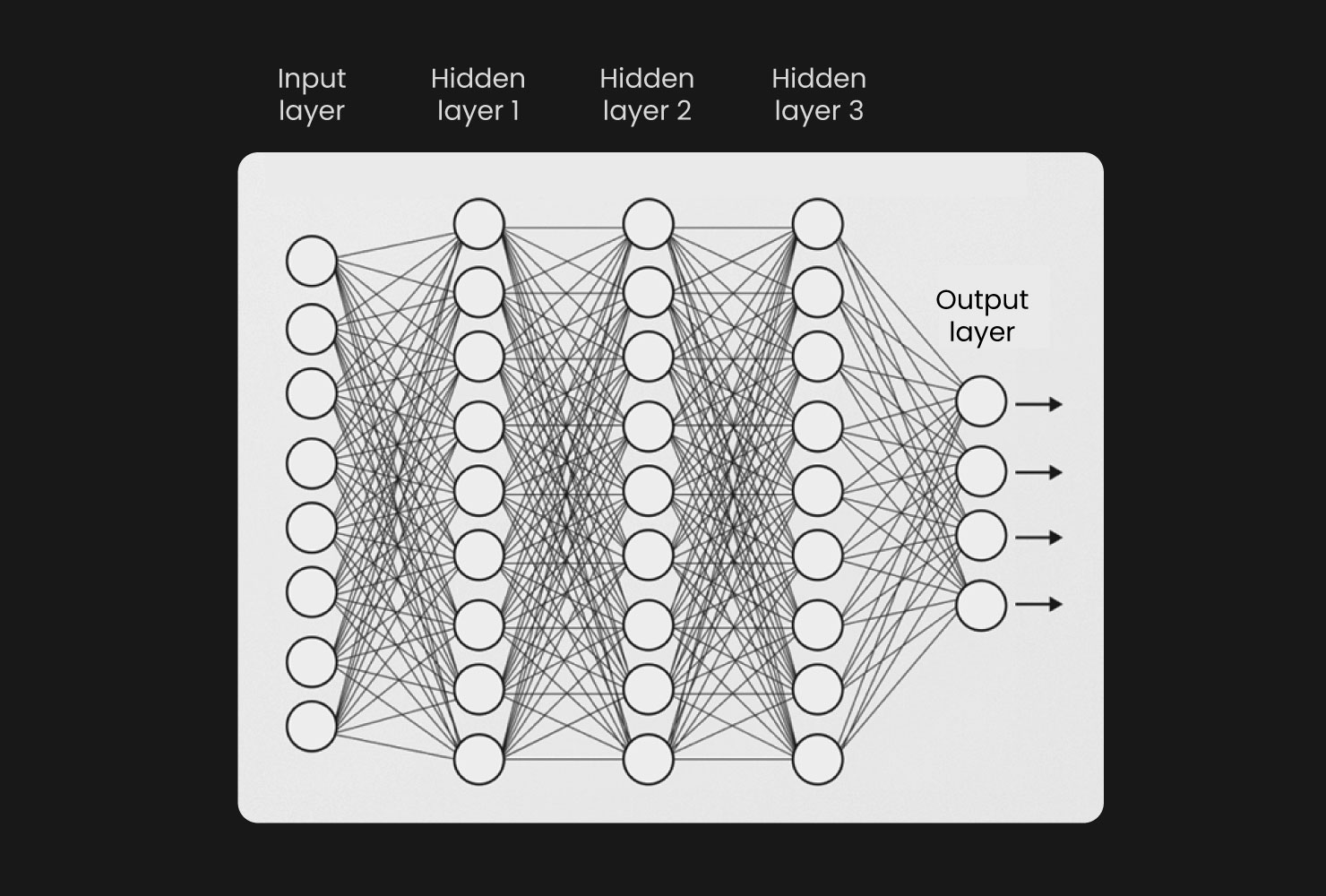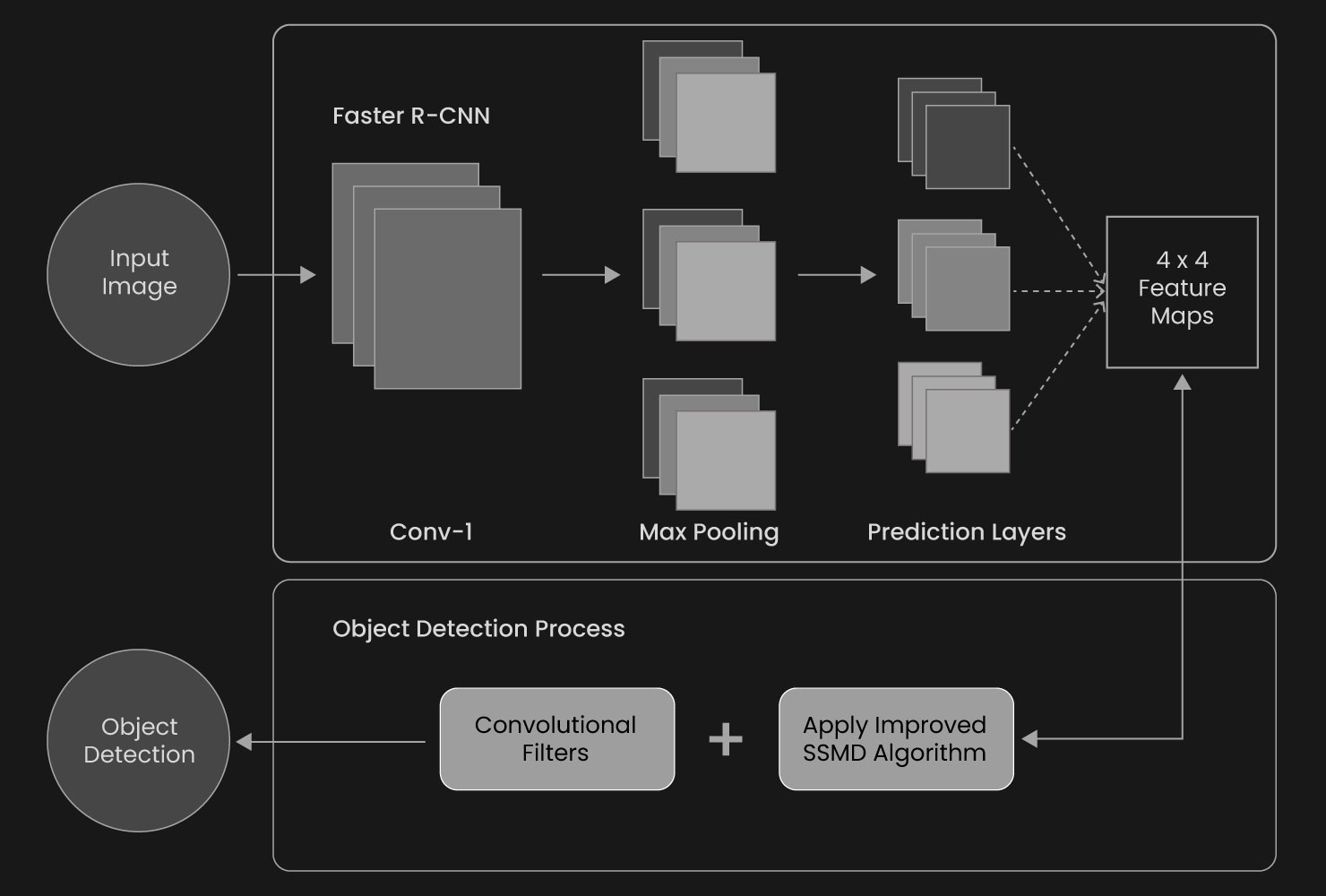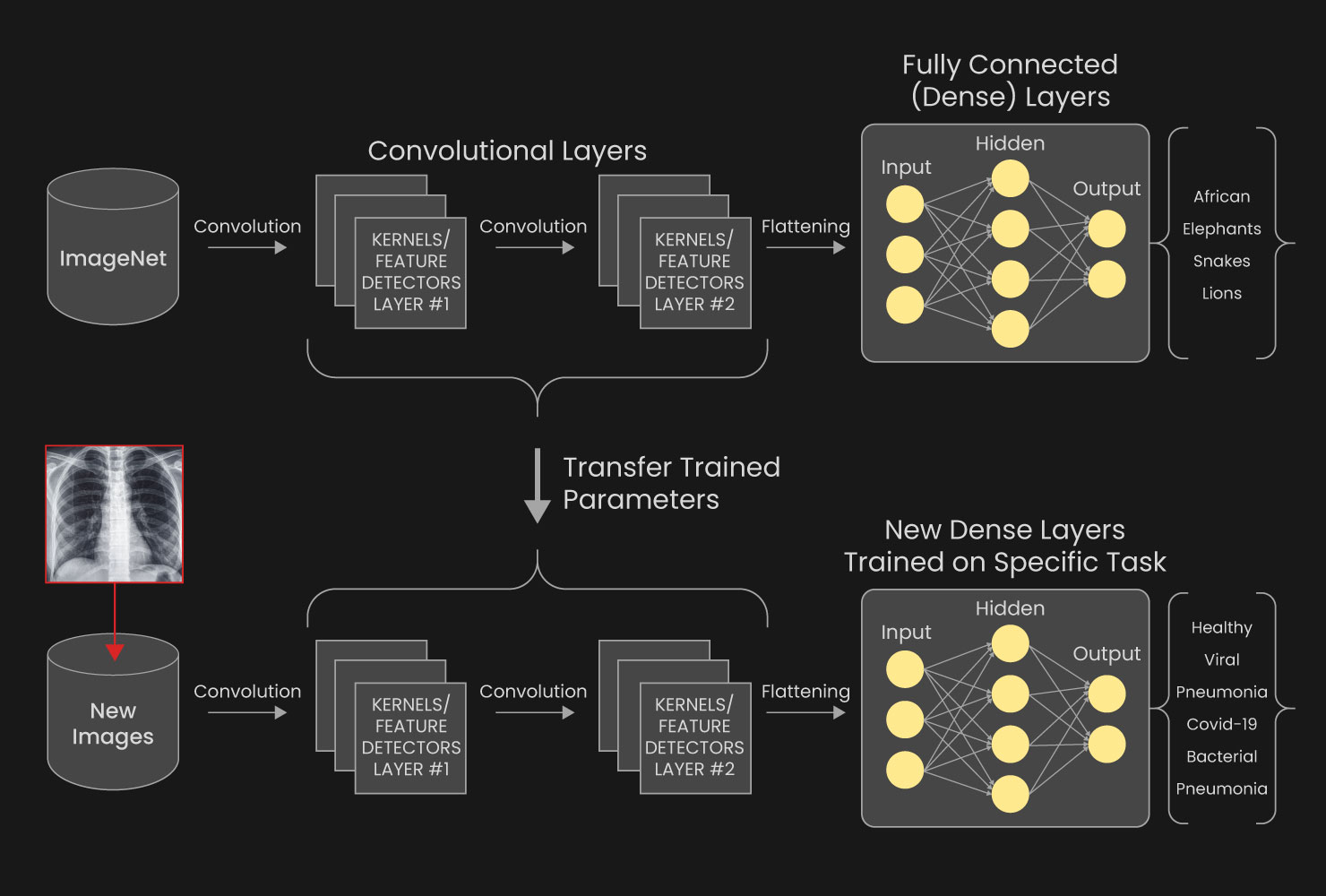Understanding Computer Vision: A Technical Overview
- Vathslya Yedidi
- March 27, 2024
Introduction
In today’s fast-paced digital age, visual information is abundant but often underused. Companies face challenges in conducting effective analytics and gaining insights from this data. This is where Computer Vision steps in as a game changer. Using advanced algorithms such as Machine Learning and Deep Learning, Computer Vision provides solutions to complex visual problems. It enables companies to automate operations, improve decision-making, and increase productivity across industries.
As per the report by Grand View Research, the Global Computer Vision market size was $14.10 billion in 2022 and the prediction is that it will grow by a CAGR of 19.6% from 2023 to 2030 reaching a value of $ 58.29 billion by that time.

This can be attributed to the fact that Computer Vision has been growing rapidly with the number of industries that have been adopting it which includes manufacturing, healthcare, transportation retail, and automotive, among others. Computer Vision applications are used across industries to streamline operational processes, enhance product quality control, for better customer experiences, and, also, increase operational efficiency.
A study by Deloitte in 2022 discovered that 64% of companies are involving Computer Vision either directly or indirectly and 58% of them are going to implement it soon.
In this blog post, we’ll delve into the technical aspects of Computer Vision, uncovering its core components, advanced algorithms, and the transformative impact it’s having across diverse industries.
Exploring the Process of How Computer Vision Works

Computer Vision uses algorithms to analyze images or videos by extracting and identifying edges, shapes, and textures.
This process involves several key steps:
1. Image Acquisition and Preprocessing
The first step in any Computer Vision pipeline is image acquisition, which involves the collection of visual data from different sources, including cameras, scanners, or pre-existing image collections. On the other hand, the raw image data tends to have noise, distortions, and other imperfections that make correct interpretation difficult. Therefore, image preprocessing approaches are used to improve the quality and utility of the visual data.
Common image preprocessing techniques include:
- Noise Reduction: Removes unwanted noise from images using filters or algorithms like Gaussian blur or median filtering.
- Color Space Conversion: Converting images from one color space (e.g., RGB) to another (e.g., grayscale or HSV) to simplify analysis or enhance specific features.
- Image Resizing: Adjusting the resolution or dimensions of an image to meet the requirements of subsequent processing steps or to improve computational efficiency.
- Edge Detection: Identifying the boundaries or edges within an image, which can be useful for object detection, segmentation, and feature extraction.
2. Feature Extraction and Representation
After the preprocessing of images or videos, the next step involves the extraction of the useful features from the images. Feature extraction is essential in Computer Vision since it converts raw pixel data into a more concise and informative representation that is suitable for such different tasks as object recognition, classification, or tracking.
- Edge Detection: As mentioned earlier, Edge Detection algorithms such as Canny Edge Detector or Sobel Operator are used to identify edges and contours within an image.
- Corner Detection: Algorithms such as Harris Corner Detector or FAST (Features from Accelerated Segment Test) are used to detect corners or interest points within an image, which can be useful for tracking and matching.
- Blob Detection: Algorithms like Laplacian of Gaussian (LoG) or Difference of Gaussians (DoG) are used to detect regions or “blobs” within an image that differ in properties such as brightness or color compared to the surrounding area.
- Feature Descriptors: Techniques like SIFT (Scale-Invariant Feature Transform), SURF (Speeded-Up Robust Features), or ORB (Oriented FAST and Rotated BRIEF) are used to describe the local features of an image, such as texture, shape, or color, compactly and robustly.
These feature extraction techniques are often combined and used in conjunction with Machine Learning algorithms to enable various Computer Vision applications.
3. Machine Learning and Computer Vision
Machine learning, an integral part of Computer Vision, allows for systems to learn from training data and then deliver accurate outputs based on the processing of visual data. Two main approaches are commonly used in Computer Vision:
- Traditional Machine Learning: In this approach, handcrafted features are extracted from images or videos, and these features are then used as input to train Machine Learning models such as support vector machines SVMs, decision trees, or random forests. This method requires domain expertise and careful feature engineering to achieve good performance.
- Deep Learning: Deep Learning, a subfield of Machine Learning inspired by the structure and function of the human brain, has transformed Computer Vision in recent years. Deep Neural Networks, such as Convolutional Neural Networks (CNNs), can automatically learn and extract relevant features from raw image data, eliminating the need for manual feature engineering. This approach has demonstrated significant achievements in various tasks related to Computer Vision, such as image classification, object detection, and semantic segmentation.
Deep Learning architectures such as VGGNet, ResNet, and Inception have achieved ultramodern performance in various Computer Vision benchmarks and have been widely adopted in industry and research.
Key Components of Computer Vision
1. Convolutional Neural Networks (CNNs)

CNNs are the backbone of many Computer Vision tasks. These Deep Learning models are adept at processing images, thanks to their ability to learn hierarchical representations. Starting from simple features like edges and shapes, CNNs progress to more complex object representations. They consist of layers such as convolutional layers, pooling layers, and fully connected layers, making them highly effective for image processing tasks.
2. Object Detection Algorithms

Object detection is a crucial aspect of Computer Vision, especially in applications like autonomous driving, surveillance, and industrial quality control. Algorithms such as YOLO (You Only Look Once) and SSD (Single Shot MultiBox Detector) excel in localizing and classifying objects within images. They enable systems to identify and categorize objects, facilitating various real-world applications.
3. Image Segmentation

Image segmentation plays an important role in understanding the spatial layout of objects within an image. By dividing an image into multiple segments or regions based on specific characteristics, segmentation techniques like semantic segmentation, instance segmentation, and panoptic segmentation provide a detailed understanding of the image content. This is valuable in applications such as medical image analysis, autonomous navigation, and scene understanding.
4. Transfer Learning

Transfer learning is a powerful technique in Computer Vision that allows developers to leverage pre-trained models for new tasks. By starting with a model trained on a large dataset, developers can fine-tune the model for a specific application without the need to train it from scratch. This significantly reduces the computational resources and time required for training, making it a popular choice in the field of Computer Vision.
Industry Applications in Various Industries with Computer Vision
Computer Vision has a varied range of applications across industries:
- Healthcare: Used for medical image analysis, disease diagnosis, surgery assistance, and monitoring patient health.
- Automotive: Enables autonomous driving, driver monitoring, traffic sign recognition, and vehicle safety systems.
- Manufacturing: Used for quality control, defect detection, robotic assembly, and process optimization.
- Retail: Powers smart checkout systems, inventory management, customer tracking, and personalized shopping experiences.
- Agriculture: Used for crop monitoring, yield prediction, animal monitoring, and automated farming equipment.
- Security and Surveillance: Enables facial recognition, object tracking, anomaly detection, and perimeter security.
- Smart Cities: Used for traffic management, public safety, waste management, and infrastructure maintenance.
- Education: Used for personalized learning, student engagement analysis, and classroom monitoring.
- Finance: Used for fraud detection, risk assessment, algorithmic trading, and customer service.
- Entertainment: Enables augmented reality (AR), virtual reality (VR), facial recognition in gaming, and content recommendation.
- Construction: Used for site monitoring, progress tracking, safety compliance, and equipment management.
- Energy: Used for asset monitoring, predictive maintenance, and energy efficiency optimization in power plants and utilities.
- Logistics and Supply Chain: Enables route optimization, inventory tracking, warehouse automation, and delivery management.
- Food and Beverage: Used for quality inspection, packaging verification, and food safety compliance.
- Pharmaceuticals: Enables drug discovery, quality control, and batch monitoring in manufacturing processes.
- Environmental Monitoring: Used for air and water quality monitoring, pollution detection, and climate change analysis.
- Marketing and Advertising: Enables personalized advertising, customer behavior analysis, and campaign optimization.
- Sports: Used for performance analysis, injury prevention, and fan engagement through augmented reality experiences.
- Telecommunications: Used for network optimization, customer service automation, and predictive maintenance of infrastructure.
- Government and Public Services: Enables data-driven policymaking, citizen services optimization, and infrastructure planning.
Challenges and Future Directions
While Computer Vision has made significant strides in recent years, several challenges remain:
- Dealing with Occlusion and Varying Lighting Conditions: Computer Vision systems can struggle with accurately detecting and recognizing objects when they are partially obstructed or in challenging lighting conditions.
- Generalization and Robustness: Ensuring that Computer Vision models can perform well on diverse and unseen data, beyond the specific training dataset, is an ongoing challenge.
- Interpretability and Transparency: Many Deep Learning models for Computer Vision are often viewed as “black boxes,” making it difficult to understand and explain their decision-making process.
- Ethical Considerations: As Computer Vision models become more prevalent, issues related to privacy, bias, and ethical use of these systems need to be carefully addressed.
Despite these challenges, Computer Vision remains a rapidly evolving field, with ongoing research and development in areas such as few-shot learning, self-supervised learning, and multimodal learning, which combines visual information with other modalities like text or audio.
Additionally, the integration of Computer Vision with other emerging technologies, such as edge computing and 5G networks, is expected to enable real-time processing and decision-making in various applications, further expanding the potential of this transformative technology.
Conclusion
Computer Vision is an intriguing and rapidly evolving field. As it continues to advance, it will play an increasingly vital role in automating processes, enhancing decision-making, and unlocking new possibilities for human-machine collaboration. Embracing Computer Vision will be essential for organizations seeking to stay ahead and leverage the power of visual data in the digital age.

